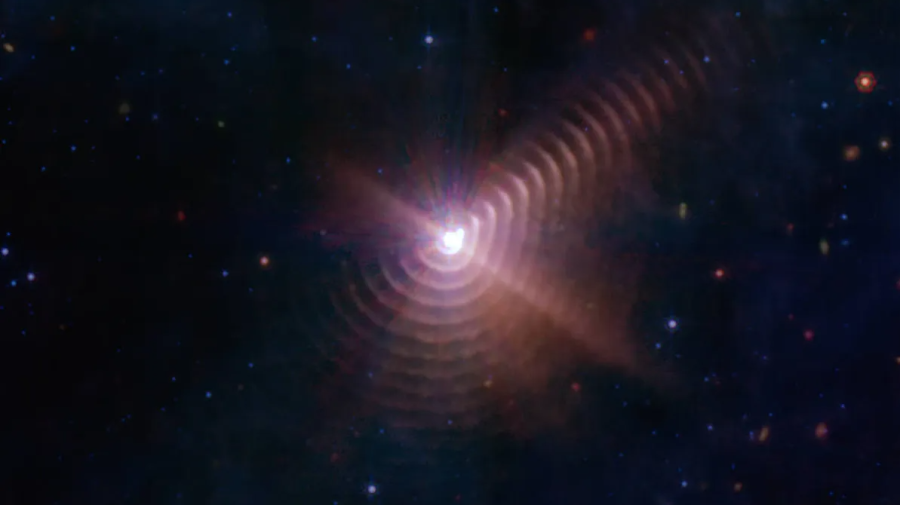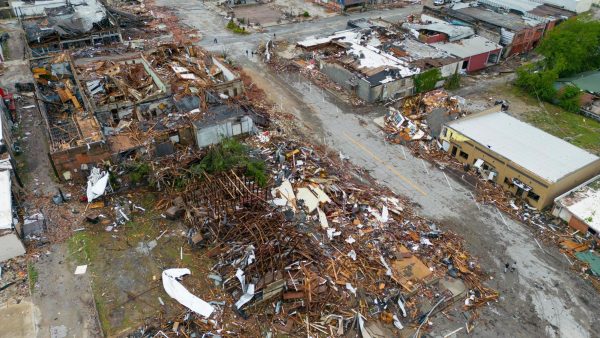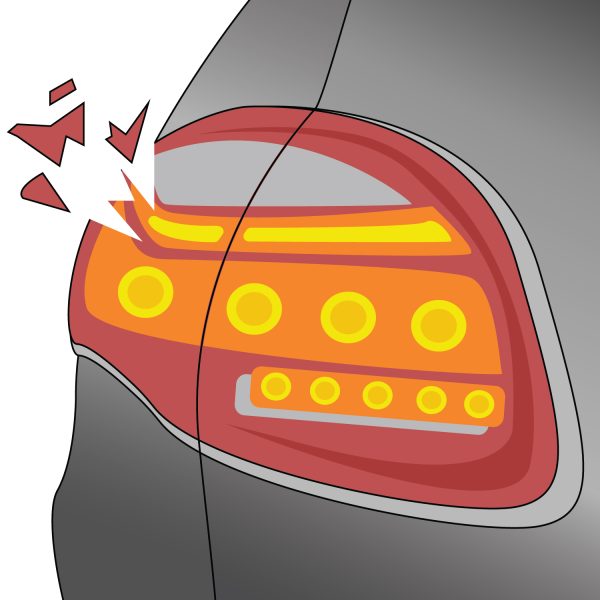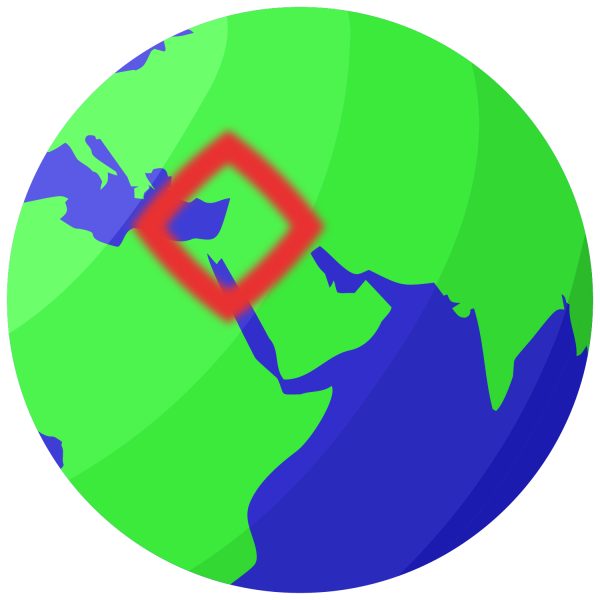Telescope Observes Giant Dust “Fingerprint”
On a recent image from the James Webb Space Telescope, 17 rings of space dust were observed around a pair of stars known as Wolf-Rayet 140.
The dust rings formed when the two stars passed by each other in close proximity and, due to the high temperatures and pressure, the ejected gas was formed into dust. The stars pass by each other every seven years, creating a new ring with each pass.
Ryan Lau, an astronomer at the NSF’s NOIRLab, states, “We’re looking over a century of dust production from this system … The image also illustrates how sensitive the telescope is. Before, we were only able to see two dust rings, using ground-based telescopes. Now we see 17 of them.”
The James Webb Telescope was able to detect these rings using its Mid-Infrared Instrument. The MIRI was developed through a partnership between NASA and the European Space Agency (ESA).
It was designed to detect long infrared wavelengths, meaning it can detect colder objects like the formed dust rings. From the collected data from the MIRI, the composition of the dust was analyzed, and it revealed that the material contained in the dust is from a Wolf-Rayet star.
A Wolf-Rayet star is a large stellar body with a mass 25 times the mass of the sun. When this star reaches the end of its life, it is very likely that it will collapse on itself and become a black hole.
In the star’s early years, it burns hot, causing it to have strong solar winds that eject gas into space; through this process, the star will lose most of its initial mass over its life.
With a Wolf-Rayet star moving this close to another star, more gas is being ejected from the star than being forced under high pressure, causing the dust rings. NASA describes the process of transforming gas into dust as “turning flour into bread.”
Other dust rings have been observed, but none have compared to the complex and intact nature of Wolf-Rayet 140. It is speculated that because of the high solar winds from the star, the surrounding space is clear of any debris that could disrupt the rings.
This discovery gives scientists a good outlook on the possible discoveries the James Webb Telescope can make. In our solar system, it is speculated that there are a few thousand Wolf-Rayet stars in the galaxy, but only 600 have been discovered. From these discoveries, new conversations open up about how these dust rings aid in the formation of new stars and galaxies.















